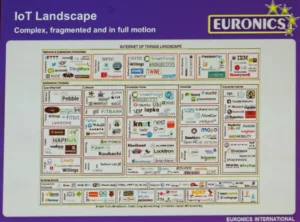A special report from Gartner on trends in digital technologies has concluded that a typical family home, in a mature affluent market, could contain several hundred smart devices by 2022. Gartner believes that the smart home will be an area of dramatic evolution over the next decade and will offer many innovative digital business opportunities to those organisations who can adapt their products and services to exploit it.
“We expect that a very wide range of domestic equipment will become ‘smart’ in the sense of gaining some level of sensing and intelligence combined with the ability to communicate, usually wirelessly”, said Nick Jones, vice president at Gartner. “More sophisticated devices will include both sensing and remote control functions. Price will seldom be an inhibitor because the cost of the Internet of Things (IoT) enabling a consumer ‘thing’ will approach $1 in the long term”.
Smart domestic product categories are numerous and range from media and entertainment, such as consoles and TVs, to appliances, such as cookers and washing machines, to transport technologies, security and environmental controls, and healthcare and fitness equipment. Gartner says that wireless technology will be a key foundation of the smart home and most of the device categories will be connected wirelessly, although no single technology will dominate. Gartner expects Wi-Fi, Bluetooth, ZigBee, cellular and various proprietary and mesh networking wireless technologies will all find a place in the smart home and that it is therefore likely that a range of gateways and adapters will be necessary to bridge between the many different standards and protocols.
Despite the many business opportunities afforded by the smart home, the smart home vision faces many challenges, not least that consumers may need to be convinced of its value. Product designers must strive to create value that goes beyond technological novelty and simple control functions. A lack of interoperability and standards may also hinder adoption of smart devices.

